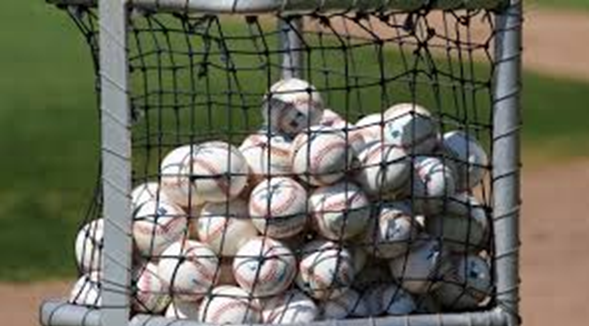Visits: 1
Baseball has been in existence since the 18th century, but there have been many changes in the way it’s played as well as the kind of equipment used for the game. Baseball balls (known simply as baseballs) used to be made of a rubber core (re-melted from old shoes, wrapped in yarn and leather), but rubber or cork cores (covered in horsehide or cowhide, wrapped in yarn or string) are the materials of choice today.
Types of Baseballs
Several types of training and practice balls are available to improve the strength and accuracy of players at all levels:
- Standard Baseballs – These are normally designed with roughly identical dimensions and weight, but crafted from different materials to suit different budgets. Standard balls are normally 9” in circumference (12” for softball), and may be larger for children’s leagues.
- Indoor Baseballs – In many areas, cold weather does not allow for outdoor games or practice sessions, so special baseballs have been designed for indoor arena use. These are softer than standard ones and do not travel as fast when players hit them.
- Practice Baseballs – These are designed to help players of all levels develop their skills, but can also be replaced by used standard ones. Practice baseballs made with alternative materials like rubber, foam, etc. are more durable than standard baseballs.
- T-Ball Baseballs – These are designed for children, since they are normally lighter and softer than standard baseballs, and help to protect from injury while playing. They feature clear labels designating them for T-ball use.
- Pitching Machine Baseballs – Designed for use in pitching machines and batting cages, these balls are normally similar in size and weight to standard baseballs. They are more durable and retain shape and hardness for longer, made with sturdy rubber and dimpled across the surface.
- Batting Training Baseballs – Designed to help players improve coordination and batting skills, these are generally the same size or smaller than standard baseballs, since smaller ones are more difficult to hit. They are available in materials like perforated plastic, and often feature bright colors to make tracking easier.
- Weighted Baseballs – Designed to help players improve their throwing strength and pitching skills, these are available in different weights and often packaged as a full set in a carrying case. They are normally color-coded to signify different weights.
- Speed Sensor Baseballs – Designed to help pitchers gauge their throwing speed, these balls are not used for gameplay and should not be hit with a bat. They feature a special sensor that measures the rate of velocity after the ball is pitched, which is then displayed on a digital screen after the ball is caught.
You should also consider:
- Covers – Baseballs are traditionally covered with leather, which is durable and long-lasting, offers consistent performance and maintains shape better in drier conditions. Synthetic covers are cheaper, color fading and dirt-resistant, and better-suited for humid conditions. A synthetic-covered high-grade cork core can perform as well as leather.
- Stitching – Baseballs with raised stitching are easier to control, since the stitching grips air currents. These are great for instruction, casual games and sharp-breaking pitches, while balls with flatter rolled stitching feature lower air-resistance and are perfect for major league games and everyday play alike.
- Cores – Various materials are used in baseball cores, like cushioned cork wrapped in a thin layer of premium rubber and then wound in wool and cotton thread. Wool is preferred for windings since it allows the ball to retain shape after being hit. Cork-and-rubber or black rubber cores often behave the same as cushioned cork but may not last as long with constant use.
- Reduced Injury Factor (R.I.F.) – This has been one of the most significant changes in baseball design in recent years. R.I.F. baseballs offer greater safety for players since they are made with polyurethane cores in official or reduced weights, to reduce impact and injuries caused by being hit by the ball. As opposed to the older “safety” balls, their performance is the same as other kinds of balls.
Buying the Right Ball
Whether you’re an amateur or professional baseball player, choosing the right equipment is essential. While shopping for baseballs, you need one that fits your age, skill level and play type for proper play during a game or practice. Many players use an assortment of baseballs, so they can develop different skills or play on their own strengths during a game. It’s also a good idea to use worn-out balls for practice, and shift new balls into this reserve as soon as they show signs of wear and tear.
About the Author: J Mike loves straddling his two jobs. He works as an Online Marketing Manager for Red Raider Outfitter during day and loves to blog about fashion & sports when he is home. He loves to turn his thoughts on fashion & sports into words. Being a Texan who breathes sports, Mike loves to cheer for his team Texas Tech Red Raider during game days.




You must be logged in to post a comment Login